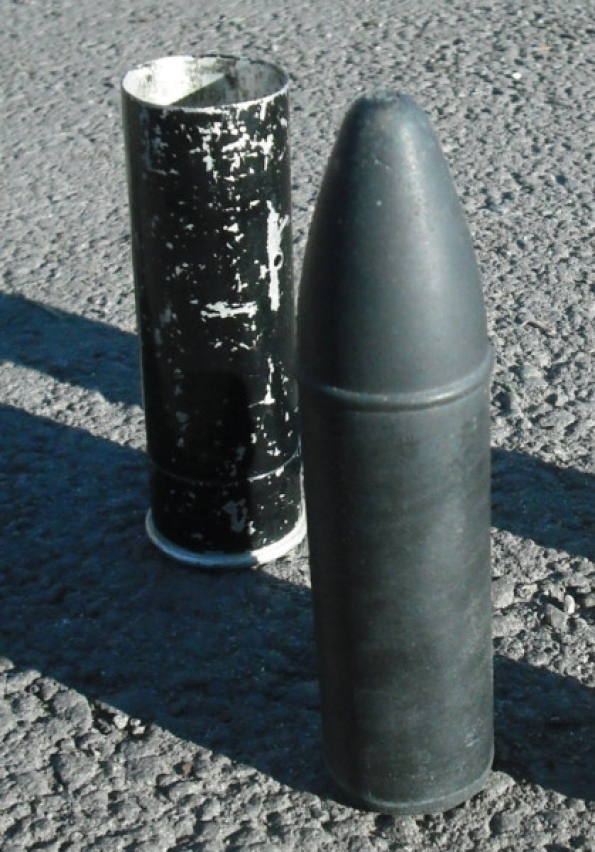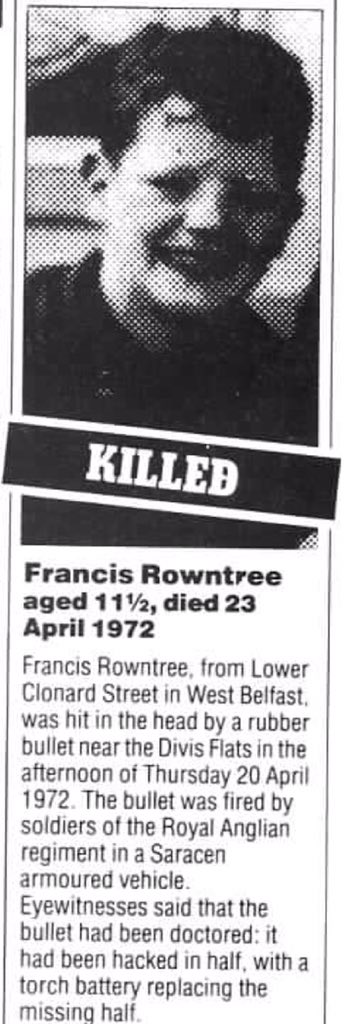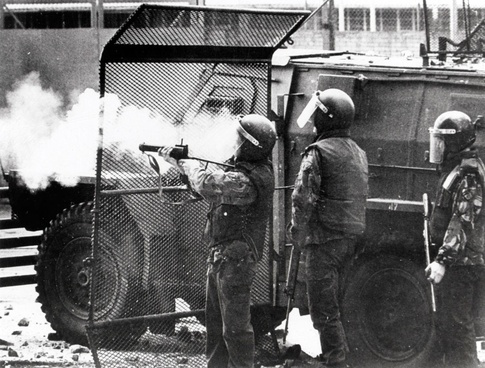18 April 2016
Doctors' evidence on rubber bullets suppressed by British Army chiefs in Whitehall

THE British Ministry of Defence (MoD) has suppressed medical evidence showing that 80% of people treated for rubber bullet wounds had injuries to their head and neck, in clear contravention of guidelines issued to British Army soldiers firing the lethal projectiles.
The revelation which came last week during the inquest into the British Army killing of 11-year-old Francis Rowntree in April 1972 when it was said that Accident and Emergency doctors working in the Royal Victoria Hospital tried to publish their findings in the British Journal of Surgery but were prevented from doing so by a scientific adviser to the MoD.

Francis (known as Frank by his family) was struck from a distance from two to three yards in the head and died on 22 April, two days after being shot as he walked through the Divis Flats area of the Falls Road.
Eyewitnesses gave evidence that the British soldier who fired the fatal shot had a clear view of the youngster when he fired and that the round hit him directly.
The doctors' findings showed that British soldiers were using the baton round against the regulations set down for their use, not least that “they should be aimed so that they strike the lower part of the target’s body directly” and also “rounds must not be fired at a range of less than 20 metres except when the safety of soldiers or others is seriously threatened”.
The rules also stated the weapon was to be used to disperse a crowd whenever it is judged to be the minimum and reasonable force in the circumstance and must be fired at “selected persons” and not indiscriminately.
The medical evidence also called for British soldiers to be made aware of the consequences of using the weapon, that it could blind or seriously injure some organs or even kill.
The inquest also heard from Alan Hepper, an MoD engineer, who admitted that the weapon was not properly tested before they were deployed in 1970 and that the British Army continued to use the bullets despite the MoD being aware they were lethal and would cause serious injuries.
He said that the tests on potential wounding by the baton rounds had been carried out at the Defence, Science & Technological Laboratory, Porton Down, Wiltshire, by firing them in controlled circumstances at sheep.
Ironically Hepper disclosed to the inquest that the effect and accuracy of the rubber baton round was tested more after its initial introduction and that the amount of gunpowder used was increased twice in a bid to make it more accurate.
In 1971, 16,752 baton rounds were fired; in 1972, 23,363 were fired.

Follow us on Facebook
An Phoblacht on Twitter
Uncomfortable Conversations

An initiative for dialogue
for reconciliation
— — — — — — —
Contributions from key figures in the churches, academia and wider civic society as well as senior republican figures





